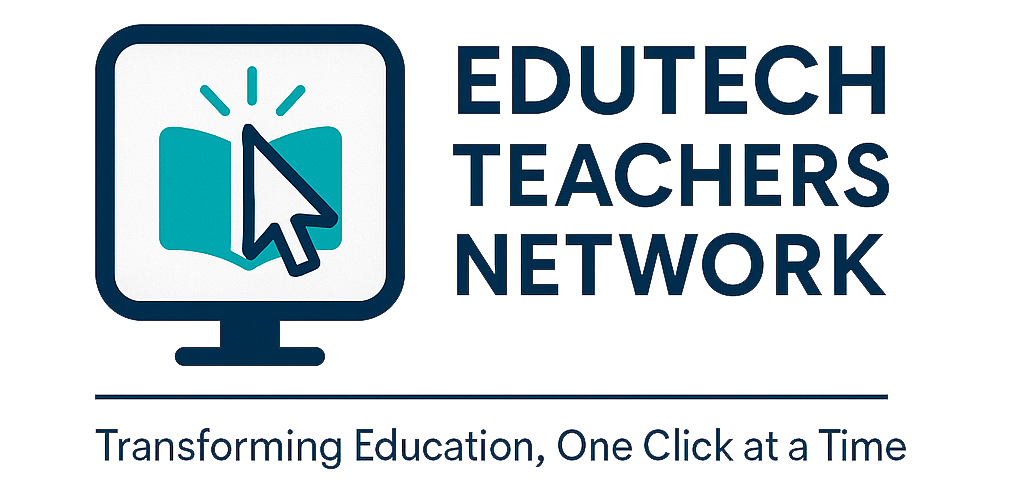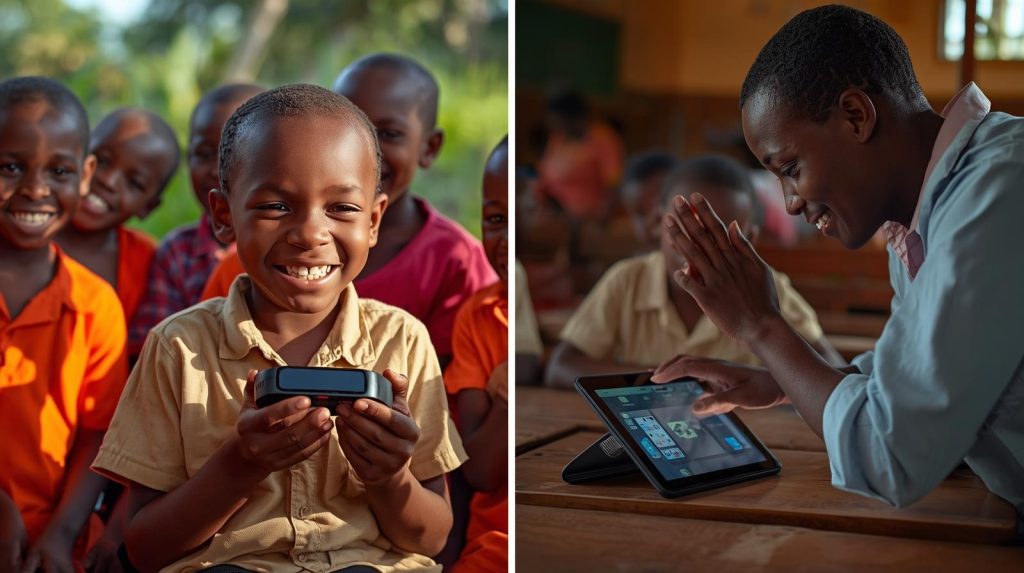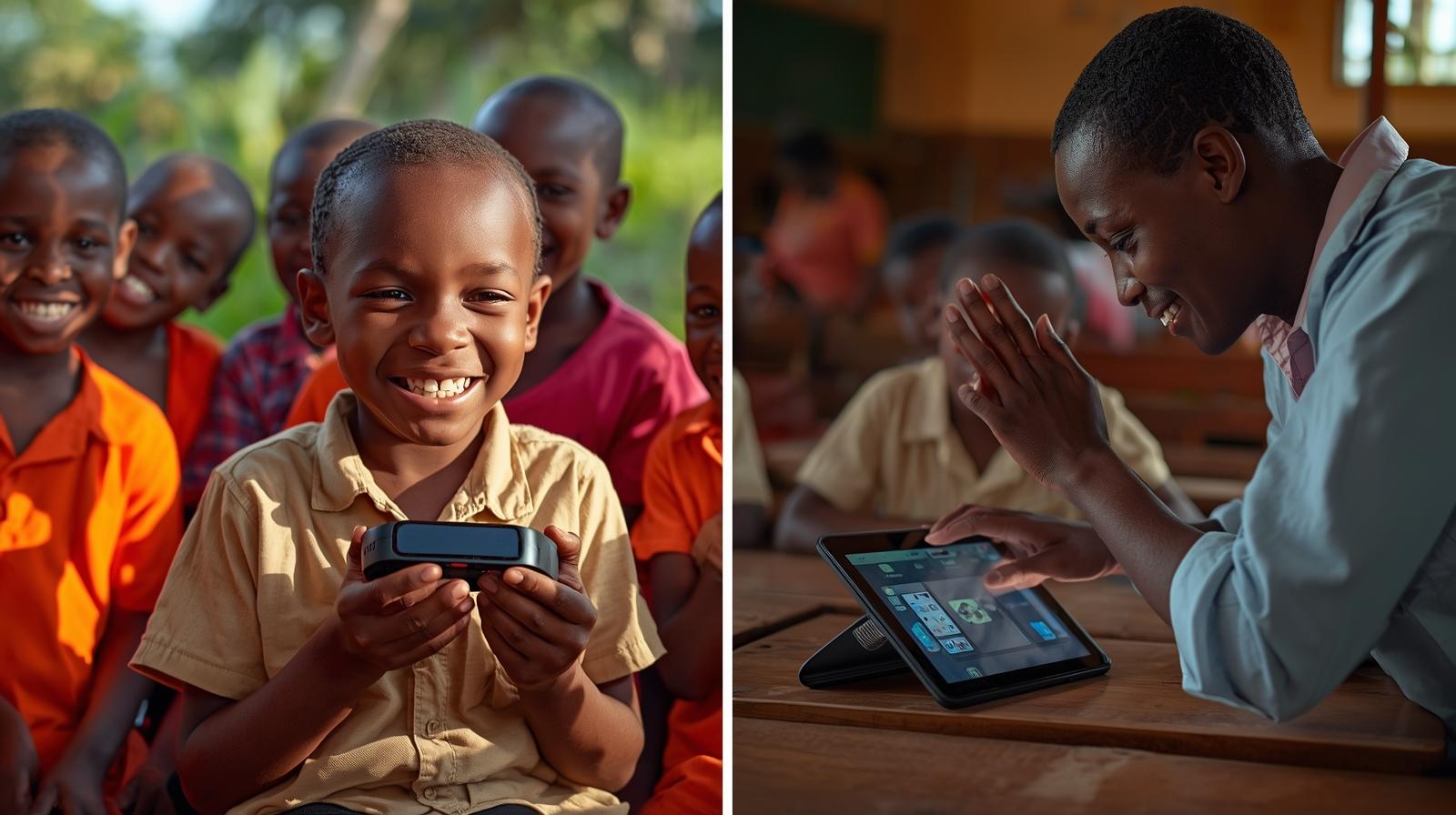In the sun-drenched classrooms of Uganda, where the laughter of children echoes against the backdrop of rolling hills and bustling markets, a profound change is unfolding. For learners with visual impairments, the world of education once felt like navigating a foggy pathfull of obstacles, frustrations, and missed opportunities. But today, assistive AI tools are lighting the way, turning those challenges into stories of triumph and empowerment. Imagine a young boy named Emmanuel in a rural school in Gulu District, his eyes clouded by congenital blindness, who used to sit quietly during lessons, feeling isolated as his classmates scribbled notes from the blackboard. Now, with a simple smartphone app that reads textbooks aloud in his native Acholi language, Emmanuel raises his hand confidently, debating history topics with enthusiasm that brings tears to his teacher’s eyes, She had to stand there for a few minutes to make sure that her eyes and ears weren’t deceiving her was that Emmanuel reading letters in braille??? She wanted to shout and cry for joy well she did have tears of joy, but she let his teacher praise him..
This is the human side of technology’s impact in Uganda, where approximately 16% of children aged 5-17 live with some form of disability, and visual impairments are among the most common, often stemming from preventable causes like malnutrition or untreated infections. In a country where education is a beacon of hope for escaping poverty, these impairments have historically led to high dropout rates and unfulfilled dreams. Yet, assistive AI tools—powered by machine learning to recognize text, describe images, and adapt content—are bridging this gap. They align seamlessly with Uganda’s Competency-Based Curriculum (CBC), which prioritizes practical skills and inclusivity, making learning accessible and personal.
This case study dives deep into how these AI-driven tools are transforming lives for visually impaired Special Needs Education (SNE) learners across Uganda. From the vibrant streets of Kampala to the quieter villages in the north, we’ll explore specific tools, heartfelt stories from teachers and students, implementation challenges, and the ripple effects on families and communities. Building on our earlier exploration in “Assistive Technologies That Transform Special Needs Education in Africa,” this piece focuses on Uganda’s unique context, where cultural resilience meets innovative tech. As highlighted in the Sharebility EduTech Course Module 2 on Digital Pedagogy & eLearning, these tools exemplify the SAMR model by redefining traditional teaching, turning passive listening into interactive discovery.
Through the voices of real people,like the determined teachers overcoming resource shortages and children discovering their potential,we will see how AI is not just a gadget but it’s a companion that restores dignity, sparks joy, and opens doors to a brighter future. In a nation where community is everything, these stories remind us that technology, when wielded with empathy, can heal and unite many.
The Human Toll of Visual Impairments in Ugandan Education
Visual impairments in Uganda aren’t just medical conditions; they’re barriers that touch every aspect of a child’s life, from forming friendships to dreaming big. For many families, like that of little Aisha in Arua District, discovering their child’s sight loss brings a mix of grief and determination. Aisha’s mother, a market vendor, recalls the heartache of watching her daughter struggle with printed books, her small fingers tracing pages in vain. “It broke my heart,” she shares, “knowing education could change her life, but the tools weren’t there.” Nationally, about 2.5 million children live with disabilities, with visual issues affecting a significant portion, often exacerbated by limited healthcare access. In schools, this means learners miss out on visual aids like diagrams or maps, leading to feelings of exclusion and lower self-esteem.
But assistive AI is changing this narrative by humanizing the learning process. Tools that convert text to speech or describe scenes aloud allow children like Aisha to engage independently, fostering a sense of pride. In broader African contexts, similar initiatives highlight the potential: UNICEF’s Accessible Digital Textbooks program has digitized materials for over 20 model schools in Uganda since 2017, incorporating AI for adaptive features like adjustable contrasts and audio narration. At Kyambogo University, a five-year project enhances teaching for visually impaired students using AI-driven assistive tech, training educators to integrate these tools emotionally and effectively. These efforts resonate deeply, as teachers witness students’ eyes metaphorically light up with understanding, turning classrooms into spaces of shared victory.
What Are Assistive AI Tools?Assistive AI tools are software or hardware systems that use artificial intelligence to support individuals with disabilities. For visually impaired learners, they primarily focus on three core functions: perception recognizing objects or text, navigation guiding movement, and interaction facilitating communication. AI algorithms, trained on vast datasets, enable real-time processing such as converting text to speech or describing scenes via camera inputs.In the African context, where infrastructure challenges like unreliable electricity and limited internet persist, these tools are designed for offline or low-bandwidth use.
Spotlight on Key Assistive AI Tools: From Innovation to Everyday HeroesAssistive AI tools vary in complexity, but their common thread is empathy driven design, making them feel like a helpful friend rather than cold machinery.
Here is a table breaking down some standout tools used in Ugandan schools, with their features, applications, and the human impact they have had;
| Tool Name | Key Features | Applications in Ugandan Schools | Human Impact Stories |
| Blind Assistant App | AI-powered text-to-speech in local languages, image description, navigation aids | Reading digitized textbooks and describing classroom visuals in schools like those in Kampala | Frank Akankwasa’s creation has helped students like Emmanuel in atVillage of Light School for the Blind feel “seen,” boosting confidence and participation. Teachers report emotional breakthroughs as kids share stories independently |
| Google Live Transcribe with AI Enhancements | Real-time captioning, multilingual support including Luganda and Swahili. | Converting lectures to audio or braille outputs in mainstream classes. | In Soroti, a girl named Grace, once withdrawn, now engages in group discussions, her laughter filling the room as she “hears” the teacher’s jokes through the app. |
| Microsoft Seeing AI | Scene description, text reading, facial recognition | Independent homework and social interactions in rural learning centers | A boy in Jinja describes how it “gave me friends,” recognizing classmates’ faces and sparking conversations that eased his isolation. |
| OrCam MyEye | Wearable device for reading aloud and object identification | Piloted in special needs units for daily tasks like identifying colors in art class | In Wakiso, a teacher’s voice cracks with emotion recounting a student’s first independent drawing, saying, “It was like watching a flower bloom.” |
| Be My Eyes AI Integration | Volunteer-assisted video calls with AI enhancements for descriptions | Field trips and complex diagram explanations in northern Uganda schools | Families in Arua share tears of joy as children describe landscapes, fostering family bonds beyond school. |
These tools aren’t abstract; they’re lifelines. Take Sarah, a passionate teacher in Kampala’s bustling suburbs. Facing a class of 60, including five visually impaired students, she felt overwhelmed until introducing the Blind Assistant App. “At first, they were shy,” Sarah recalls with a warm smile, “but when one boy read his essay aloud using the app, the class applauded. It was a moment of pure connection.” Such stories humanize tech, showing how it restores joy and normaly. Today young Ugandan students with visual impairment are seen smiling while using a smartphone app in a classroom, with classmates around or in the communities they stay which is so amaizing and inspiring really and Navigating Challenges,Heartfelt Struggles and Resilient Solutions.
Challenges and Practical Solutions
Infrastructure Gaps: Limited electricity in rural areas like Karamoja. Solution: Solar-powered devices and offline AI.
Training Deficits: Many teachers lack skills. Solution: Workshops via EduTech Teachers Network.
Affordability: High initial costs. Solution: Partnerships with NGOs like SightSavers.
Cultural Stigma: Some communities view disabilities negatively. Solution: Awareness campaigns.
Educators can mitigate these by starting small, like piloting one app per class.
Adopting AI tools in Uganda comes with real-world hurdles that tug at the heartstrings. In remote areas like Kitgum, unreliable electricity leaves devices dormant, frustrating eager learners like young Okello, who dreams of becoming a doctor but can’t charge his phone. Costs add another layer; while apps are often free, devices can strain family budgets in a country where poverty affects many. Teachers, too, share vulnerabilities many start with little tech savvy, feeling inadequate until training turns fear into empowerment.
Yet, resilience shines through. Partnerships like MTN Uganda’s donations of assistive tech to schools in Gorreti have equipped visually impaired students, turning hope into reality. In Gulu High School, UNICEF’s support since 2017 has provided devices that helped George Ntakimanye, a blind student, excel in exams, his success inspiring siblings and neighbors. Community workshops, often led by tearful but determined parents, sensitize locals, reducing stigma. “When my son succeeded,” one father shares, “the village celebrated like it was their own win.” These solutions, born from empathy, make tech sustainable.
Inspiring Success Stories: From Despair to Dreams Realized here in Uganda today
The true magic of assistive AI lies in the personal transformations. In Wakiso District’s model school, part of UNICEF’s program, digitized textbooks with AI features have changed lives. Fourteen-year-old James, blind from birth, used Seeing AI to master math, his grades soaring as he independently solved problems. “I felt powerful,” James beams, his voice full of wonder. His teacher, fighting back emotion, adds, “He’s not just learning; he’s leading study groups now.”
In northern Uganda, post-conflict healing includes education. At a Lira school, OrCam MyEye helped girls like Fatima participate in environmental projects. Fatima, who lost her sight in an accident, describes the app’s voice as “a gentle guide,” allowing her to “see” trees during a field trip. Her mother’s hug after a school presentation speaks volumes of restored family pride.
Urban tales are equally moving. In Jinja’s Spire Road Primary, teachers like Francis Etyang, himself disabled, inspire with AI tools, creating bonds that heal old wounds. One student, overcoming shyness, won a storytelling contest using app-narrated tales, her victory a community milestone.These narratives show AI’s role in emotional healing, turning isolated children into confident contributors.
The advantages of assistive AI tools extend beyond access:
Enhanced Independence: Learners perform tasks autonomously, fostering self-esteem. A ResearchGate study (2025) found a 35% increase in self-reported confidence among Ugandan SNE students.
Improved Learning Outcomes: AI personalization caters to individual paces, leading to better grades. In Soroti, test scores rose by 20% post implementation.
Inclusivity in Classrooms: Teachers can facilitate mixed-ability groups, promoting social integration.
Cost-Effectiveness: Apps like NVDA are free, reducing the need for expensive Braille resources.
Quantitatively, a table of impacts from recent studies you will get to know more when you join the Edutech Teachers Network.
Best Practices for Teachers in Uganda and Africa
For effective integration, Assess learner needs: Use simple surveys to identify impairment levels.,Train progressively: Begin with basic apps, advancing to complex ones,Collaborate: Form school clubs for peer support,Monitor and adapt: Track usage with feedback loops and Ensure safety: Teach digital wellness to prevent over reliance. In African contexts, adapt tools to local languages and curricula for relevance this will surely work it out and For more, explore edutechteachers.net
Future Prospects: Building a Compassionate Future with AI and Scaling AI in Ugandan SNE
As Uganda advances, scaling AI requires heart-centered advocacy. Policies like the National ICT in Education Strategy can mandate training, while communities rally for funding. Teachers like Sarah envision a day when every child accesses these tools, their dreams unhindered.
Uganda’s Vision 2040 emphasizes digital transformation. With growing 5G and AI investments, tools could evolve to include haptic feedback or augmented reality. Advocacy by networks like EduTech Teachers can push for policy reforms, ensuring every visually impaired learner benefits.
Finaly Assistive AI tools for visually impaired SNE learners in Uganda are more than innovations they are bridges to humanity, restoring laughter, confidence, and connection. From Emmanuel’s debates in Gulu to Fatima’s field trips in Lira, these stories remind us of technology’s power when infused with empathy. As educators, let’s embrace this wave, ensuring no child’s light dims. In doing so, we build not just smarter classrooms, but kinder communities where every dream can shine. These Assistive AI tools are not merely technological novelties, they are catalysts for equity in Uganda’s education system. a great example is witnessed from Aisha in Jinja mastering her science lessons via a simple app, to university students at Makerere navigating independence, these innovations are rewriting narratives of exclusion. As teachers, embracing them means committing to a future where no child is left behind. Join the EduTech Teachers Network today to access training and resources https://sharebility.org/edutech-course/ together, we can turn challenges into triumphs, one AI-assisted step at a time.




Leave a Reply